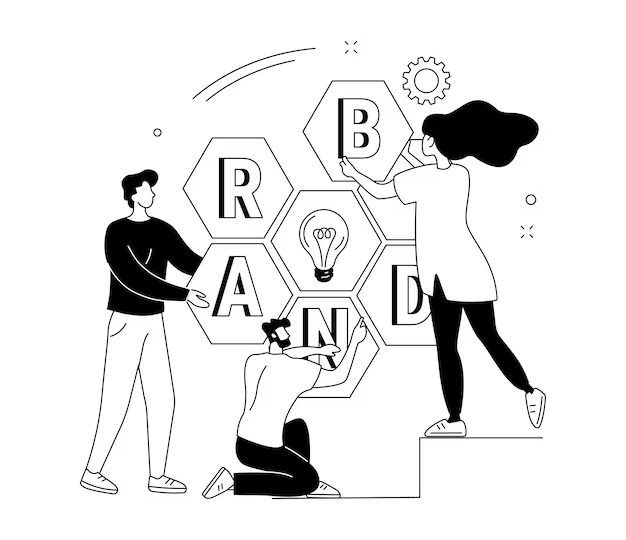In today’s highly competitive and ever-evolving digital landscape, brands are constantly seeking innovative ways to stand out and connect with their target audience. One powerful tool that has emerged in recent years is the integration of Creative Intelligence in brand asset creation. By harnessing the capabilities of a brand asset management platform and leveraging Creative Intelligence, brands can elevate their creative processes, optimize asset creation, and deliver impactful experiences that resonate with consumers.
In this article, we will explore the concept of Creative Intelligence and its integration into brand asset creation, highlighting the benefits and best practices for leveraging a brand asset management platform to enhance creative workflows and drive successful brand outcomes.
I. Understanding Creative Intelligence:
Creative Intelligence is a concept that combines human creativity with AI-powered technologies to enhance the creative process. It involves leveraging data, insights, and predictive analytics to inform and optimize creative decisions. By integrating AI into the creative workflow, businesses can unlock new possibilities, generate innovative ideas, and improve the overall quality of brand asset creation.
The Benefits of Creative Intelligence in Brand Asset Creation:
Creative Intelligence brings several benefits to brand asset creation. Firstly, it enhances creativity and ideation by providing tools and algorithms that can generate new ideas and explore unconventional approaches. It pushes the boundaries of traditional creativity and opens up new avenues for brand expression. Additionally, Creative Intelligence enables data-driven decision-making by leveraging insights and analytics to inform creative choices. It ensures that brand assets are aligned with the preferences of the target audience and current market trends.
Creative Intelligence also optimizes resource allocation by identifying high-performing creative assets. By analyzing data on asset performance, businesses can focus their efforts on areas with the highest potential impact, optimizing their creative resources for maximum effectiveness. Moreover, Creative Intelligence improves efficiency and productivity by streamlining creative workflows and automating repetitive tasks. This allows creative teams to concentrate on higher-value activities that require human creativity and expertise.
II. The Role of a Brand Asset Management Platform:
Brand asset management is the process of organizing, storing, and distributing brand assets. With the proliferation of digital channels and touchpoints, managing a large volume of assets can be challenging. A brand asset management platform provides a centralized solution for storing and managing these assets, ensuring easy access and efficient distribution.
Integrating Creative Intelligence in Brand Asset Management:
Creative Intelligence plays a crucial role in brand asset management by leveraging AI-powered technologies within a brand asset management platform. These technologies enable features such as AI-assisted tagging and metadata management, which streamline the process of organizing and categorizing assets. This ensures that assets can be easily searched and retrieved, saving time and effort.
Additionally, a brand asset management platform integrated with Creative Intelligence can provide intelligent asset recommendations. By analyzing audience preferences, historical performance, and market trends, the platform can suggest relevant assets for specific campaigns or target audiences. This enhances the efficiency and effectiveness of brand asset utilization.
The platform also leverages predictive analytics to forecast asset performance and inform future creative strategies. By analyzing past data, trends, and audience behavior, businesses can make informed decisions about which assets to prioritize and how to optimize their creative output.
III. Best Practices for Integrating Creative Intelligence in Brand Asset Creation:
A. Data-driven Audience Insights:
To effectively integrate Creative Intelligence in brand asset creation, businesses should leverage audience data and analytics. By understanding the preferences, behaviors, and expectations of the target audience, brands can create assets that resonate with their customers. Creative Intelligence can help identify content themes, visual styles, and messaging that are most likely to engage the audience and drive desired outcomes.
B. Collaborative Workflows:
Collaboration is essential in the creative process, and Creative Intelligence can facilitate seamless collaboration among cross-functional teams. A brand asset management platform equipped with collaboration features allows team members to share feedback, iterate on creative ideas, and maintain version control. This streamlines the creative workflow and ensures that everyone is aligned and working towards a common goal.
C. Iterative Optimization:
Continuous improvement is key to effective brand asset creation, and Creative Intelligence can aid in iterative optimization. By monitoring and analyzing asset performance metrics, businesses can identify areas for improvement and make data-driven decisions to enhance their brand assets. Creative Intelligence tools can generate insights and recommendations for optimizing assets, guiding the iterative process and driving continuous improvement.
IV. The Future of Creative Intelligence in Brand Asset Creation:
A. Advancements in AI and Machine Learning:
As AI and machine learning technologies continue to advance, the potential for Creative Intelligence in brand asset creation will expand. Predictive modeling and content generation based on audience preferences and historical performance will become more sophisticated. AI algorithms will be able to generate personalized content at scale, delivering highly relevant and engaging brand experiences.
B. Personalization and Dynamic Creative:
Creative Intelligence will enable brands to deliver personalized experiences through dynamic creative optimization. By harnessing real-time data on user behavior, location, and context, brands can customize their brand assets to create personalized and contextually relevant content. This level of personalization will enhance brand engagement and create more meaningful connections with customers.
Conclusion
Creative Intelligence, when integrated with brand asset management platforms, brings significant advantages to the creative process. It enhances creativity and ideation, enables data-driven decision-making, optimizes resource allocation, and improves efficiency and productivity. By following best practices such as leveraging audience insights, facilitating collaborative workflows, and embracing iterative optimization, businesses can harness the full potential of Creative Intelligence in brand asset creation. Looking to the future, advancements in AI and machine learning will further enhance the capabilities of Creative Intelligence, enabling personalized brand experiences and dynamic creative optimization.








